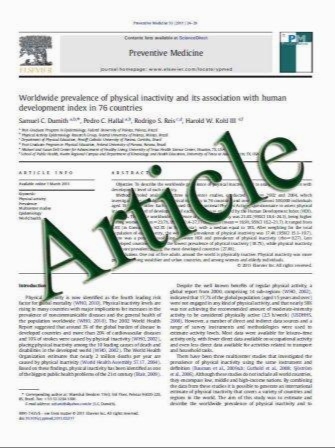Defining breast cancer prognosis based on molecular phenotypes: results from a large cohort study
- نوع فایل : کتاب
- زبان : انگلیسی
- مؤلف : Shaheenah Dawood Rong Hu Michelle D. Homes Laura C. Collins Stuart J. Schnitt James Connolly Graham A. Colditz Rulla M. Tamimi
- چاپ و سال / کشور: 2010
Description
The objective of this study is to define the survival outcomes associated with distinct molecular phenotypes defined by immunohistochemical staining of paraffin- embedded tissues among invasive breast cancer cases identified from the Nurses’ Health Study (NHS). Tissue microarrays were constructed from archived tissue blocks of women diagnosed with breast cancer in the NHS (1976–1997). Invasive non-metastatic breast cancer tumors (n = 1,945) were classified into 1 of 5 molecular phenotypes based on immunohistochemistry assays for estrogen receptor (ER), progesterone receptor (PR), HER2, cytokeratin (CK) 5/6, epidermal growth factor receptor (EGFR) and grade. Survival outcomes were estimated using the Kaplan–Meier product limit method. Cox-proportional hazards models were fitted to determine the association of molecular phenotype with survival outcomes after adjusting for covariates. 1,279 (65.8%) tumors were classified as luminal A, 279 (14.3%) as luminal B, 95 (4.9%) as HER2 type, 203 (10.4%) as basal-like and 89 (4.6%) tumors were unclassified. The 5-year breast cancer-specific survival estimates for women with luminal A, luminal B, HER2-type, basal-like and unclassified tumors were 96, 88, 81, 89 and 85%, respectively. In the multivariable model, compared to cases with luminal A tumors, cases with luminal B (HR 1.90, 95% CI 1.33–2.71), HER2-type (HR 1.36, 95% CI 0.87–2.12), basal-like (HR 1.58, 95% CI 1.05–2.39) and unclassified (HR 1.38, 95% CI 0.87–2.20) tumors had higher hazard of breast cancer death. Similar trends were observed for both overall and recurrence-free survival. In conclusion, compared to women who have luminal A tumors those with luminal B, HER2-type, basallike and unclassified tumors had a worse prognosis, when tumor subtype was defined by immunohistochemistry. This method may provide a cost-effective means of determining prognosis in the clinical setting.
Breast Cancer Res Treat (2011) 126:185–192 DOI 10.1007/s10549-010-1113-7 Received: 29 July 2010 / Accepted: 31 July 2010 / Published online: 14 August 2010 Springer Science+Business Media, LLC. 2010


